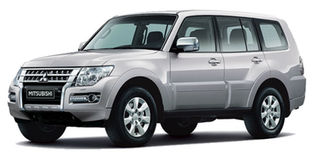What happened to Pajero’s popularity?

What you need to know:
The Mitsubishi Pajero was one of the most popular cars on the road. But then the appearance of the first Prado led to its partial disappearance, writes Mustapha Ziraba
Mitsubishi Pajero. There was a time when this car was a symbol of privileged circumstances, prosperity and material comfort.
Pajero was Pajero. I had never really thought about it but as I was typing this article it occurred to me just how peculiar the word Pajero actually is, don’t you think? And yes, I do not know what it means. Anyway Mitsubishi’s darling even did inspire competition to come up with answers such as the Prado. All of a sudden, the popularity dipped, it dipped so hard that you rarely see one on the roads in this day and age.
The Rav4 swiftly replaced the once popular with the ladies Pajero short chasis. Well of course there are the newer ones, which for some reason seem to be reserved for the government ministries and big organisations.
Competition
The once ‘ Big Daddy’ of Japanese 4x4s has been around since the Eighties, earning respect for its durability, reliability and spaciousness, nonetheless, as technology advances we see some things become obsolete or they are replaced by the bigger and better.
The automotive world is no exception to this rule.
How it works is quite simple. A car may be released with technology that has never been seen before and set a standard among the next line of vehicles to hit the market.
However, when a vehicle manages to achieve a higher standard than those of its class then it certainly negatively affects other cars in its genre.
Unfortunately, the Mitsubishi Pajero is a victim of this constant loop of advances. The Pajero seems to have been left behind in the race right after 1996 and the rising status of the Prado.
The Pajero was available in 2800cc diesel, 3000cc and 3500cc petrol engine variants. The 2.8 and 3.0 had very similar power output figures with the diesel winning with greater available torque.
The 3.5 was by far the most powerful option, giving very usable power for on and off road use.
Super select transmission
The diesel engine was an in-line four cylinder block with an inter-cooler and a turbocharger, both options for petrol were in the V6 configuration and naturally aspirated meaning no turbochargers and the like.
On the more lavish versions Mitsubishi did use their ‘Super Select’ transmission option to deliver selectable drive to either two or four wheels dependent on requirement. This was delivered via either an automatic or manual gearbox. This meant that you had several options when on the move. Either two-wheel drive via the rear wheels or differing choices of four-wheel drive.
With our substandard roads, poor and sporadic service to the cars the Pajero proved to be a pain to own. And as we all know we have always been moving towards tighter economic times from way back, the constant breakdowns gave the Pajero a bad buzz among buyers.
At the garages, you hear conversations such as ‘gearboxes are the first bits to break’. Listen out for transmission whine, under body damage, grumbling wheel bearings, suspension alignment, pathetic body roll in tight corners, very soft suspension, steering arm ball joints, the diesels are slow and all engines are thirsty, rust everywhere on older models etc etc, the list goes on. And finally the appearance of the first Prado sealed the deal.
However, the Pajero seems to be making a comeback with the newer models. But the price tags are still way out of reach for many. Most of these are government or company driven and as usual, with cars in this category, they are either banged up and look ugly or are in pristine condition.
Let us wait and see how these refreshed models fair on the Prado infested roads.




